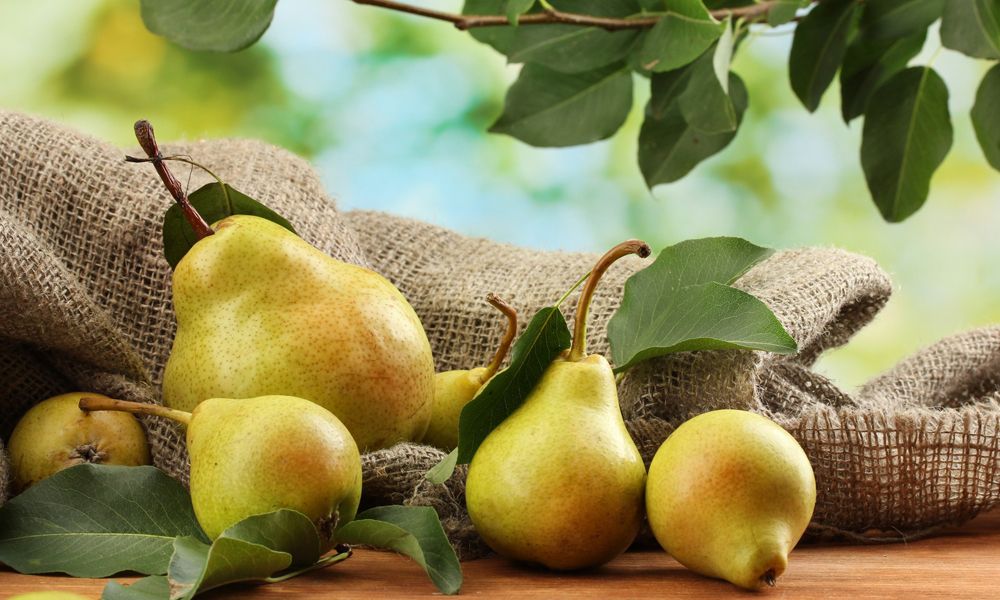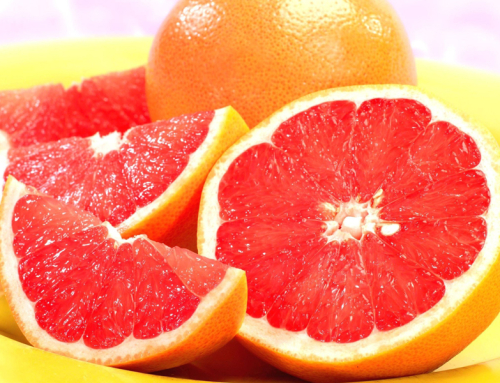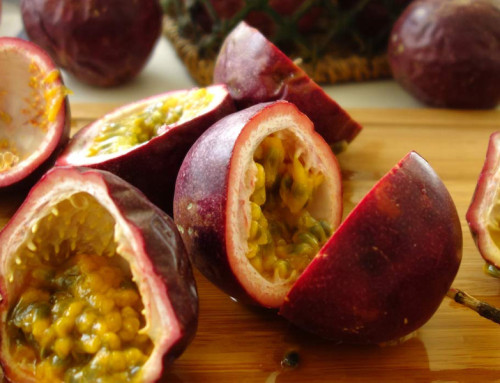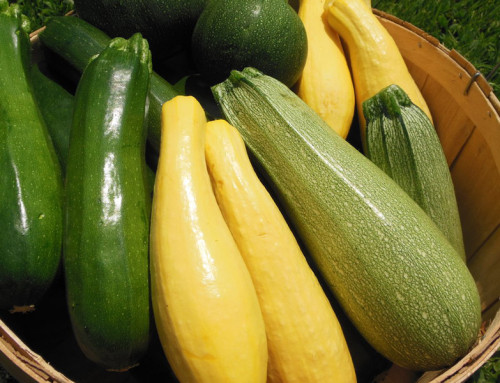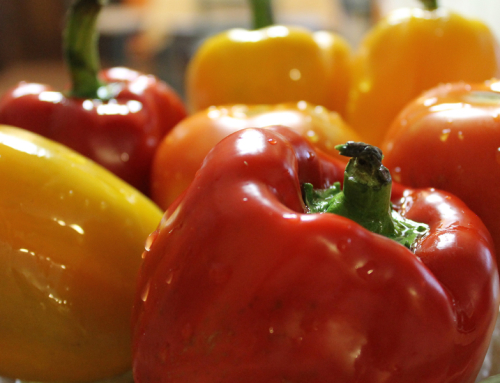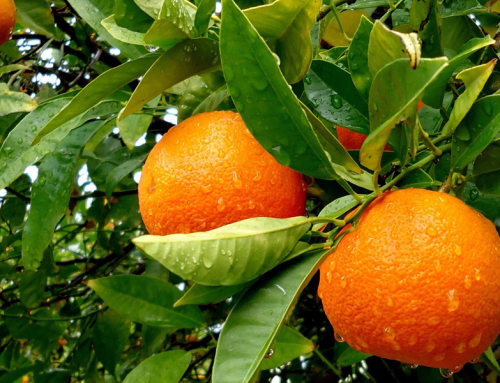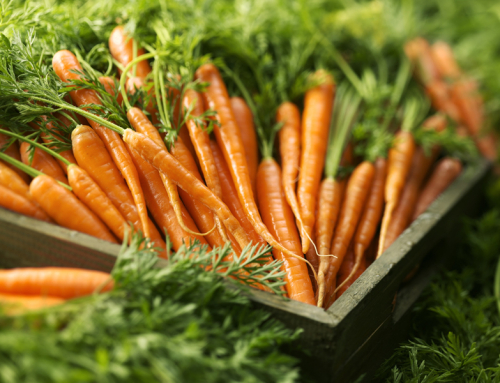- One half a cup serving of fresh pears = 50 calories. It also contains 13 g of carbohydrates of which 8 g are sugar and 4 g are fiber.
- For canned pears in light syrup, one half cup = 87 calories, however, it is best to just read the label of processed products because there may be other additives.
Here are the calories and basic nutrient breakdowns of some of the more common varieties:
- Anjou (166g) = 100 Calories (Carbohydrates 25g; Fiber 4g; Protein 1g; RDA: Vitamin C 10%; Calcium 2%; Iron 2%)
- Asian (122g) = 51 Calories (Fat 0 2%; Carbohydrate 13g; Fiber 6g; Sugars 8.6 g; Protein 0.6g; Vitamin C 80%)
- Bartlett (148g) = 86 Calories (Carbohydrate 23g; Fiber 5g; Sugars 15g; Protein 1g; Vitamin A 1%; Vitamin C 10%; Calcium 1%; Iron 1%)
- Bosc (166g) = 100 Calories (Carbohydrate 25g; Fiber 4g; Protein 1g; Vitamin C 10%; Calcium 2%; Iron 2%)
- Red Bartlett (166g) = 100 Calories (Carbohydrate 25g; Fiber 4g; Protein 1g; Vitamin C 10%’; Calcium 2%; Iron 2%)
- Pears are nutrient dense, with more nutrients per calorie, than calories per nutrient. and carbohydrates are helpful in weight reduction diets because they contain half as many calories as fat.
- Pears have a water content that ranges from 83 % for most domestic varieties to 88 % for the Nashi This added water helps to rehydrate the body, prevent muscle cramping, recover more quickly from gastric distress and illness, and especially from lower respiratory infections such as pneumonia.
- Pears have a lower acid content than apples and work well as a second stage item in the BRAT diet (bananas, rice, applesauce and toast ) that pediatricians recommend for recovery from nausea, vomiting and diarrhea. This is also because they are easily digested, though there is no research to back up that claim. Pediatricians believe that the pear should be one of the first fruits that an infant should eat during weaning.
- Pear carbohydrates make up 98% of the energy provided and so is a quick source of energy, mostly due to two mono-saccharides: fructose and glucose, as well as Levulose, which is the sweetest of known natural sugars and found in greater amounts in fresh pears than in any other fruit.
- One medium pear contains 27.5 g of carbohydrates; 0.68 mg protein; 0.21 g fat; and 5.5 g of fiber; 12 mcg of folate; 9.1 mg of choline; 23 mcg of beta-carotene; 41 international units of vitamin A; and 8 mcg of vitamin K.
- One medium pear provides 7 to 7.5 mg, or 10% of the RDA for Vitamin C, an antioxidant responsible for normal metabolism and tissue repair, enhances the immune system and promotes healing of cuts and bruises. It also helps in making collagen, a key ingredient in cartilage, the substance that helps cushion joints.
- Pears provide 50-80 mcg of lutein and zeaxanthin per 100 g serving. These compounds are found inside the eye in the macula. Lutein and zeaxanthin protect the eye from age-related macular degeneration; ultraviolet light and also help prevent damage from free radicals.
- Pears provide 119 to 121 mg of potassium per 100 g serving. and only 2 mg of sodium. Potassium is an essential dietary mineral that helps prevent stroke, osteoporosis and hypertension. It makes muscle contract and relax, so it is vital to heart function. Potassium also prevents cramping and speeds recovery from muscle fatigue after strenuous exercise.
- One medium pear has .146 milligrams of copper, nearly 10 percent of the recommended daily intake of 900 micrograms daily. Copper is necessary in the body’s production of hemoglobin, collagen and elastin and also helps the nerves, bones and immune system to stay healthy.
- Other minerals include 16 mg of calcium; 0.3 mg of iron; 12 mg of magnesium; 20 mg of phosphorus; 3.9 mcg of fluoride; and 0.2 mcg of selenium.
- One medium pear provides 2.32 grams of crude fiber, 4 grams of dietary fiber, of which 41% is pectin. Fiber contains no calories, and is a necessary element to maintain bowel health, helps lower cholesterol, controls blood sugar levels and protects against certain cancers, such as colorectal. Pear fiber binds together with bile acids and secondary bile acids in the intestine, which can decrease the risk of colorectal, esophageal and gastric cancers due to the phytonutrients, especially the hydroxycinnamic acids.
- Pears excel in phytonutrients that are of special interest to researchers sush as Hydroxybenzoic acids (chlorogenic, gentisic, syringic, vanillic); Hydroxycinnamic acids (coumaric, ferulic, 5-caffeoylquinic); Hydroxyquinones (arbutin); Carotenoids (beta-carotene, lutein, zeaxanthin). Virtually all have antioxidant and anti-inflammatory benefits resulting in pears being associated with decreased risk of diseases that begin with chronic inflammation and excessive oxidative stress such as heart disease.
- Pear flavonols (isorhamnetin, quercetin, and kaempferol), flavan-3-ols (catechin and epecially epicatechin), and the anthocyanins (found in red-skinned pears) all help improve insulin sensitivity in Type 2 diabetes.
Washington state is the largest producer of pears, and responsible for about half of all U.S. pears. Oregon and California are next, followed by New York and Pennsylvania. However, worldwide, USA is small potatoes…er, pears. Out of 21 million tons of pears produced worldwide, China is the largest pear-grower with about 15.5 million tons, which is three-quarters of the world’s total pears. The other 5.5 million tons are split up as follows: 2.7 million tons come from Europe, 1.1 million from Argentina and Chile, but only 0.8 million are from the United States and the other smaller amounts come from New Zealand, South Korea, and other countries. Because Americans eat so many pears, we Import over 75,000 tons of pears annually, mostly from Argentina, Chile, China, South Korea and New Zealand.
Pears are generally available in the autumn months, but some varieties can be found year-round. Pear trees are very easy to crossbred, are typically grafted, and do not grow true from seed. This means that if you plant pear seeds, they likely will not grow up to be the pear you thought you planted due how crossbred genes work.
The Many Varieties of Pears
The difference between the yellow-green pears and the red pears is found in the special antioxidant compounds of the skins of red pears. Red pears have a high concentration of the phytonutrient, anthocyanin. Anthocyanin has anti-aging properties, promotes heart health and protects against cancer. Here is a brief list of the more common pears found in U.S. grocery stores.
Green Pears
- Bartlett: These are the best known commercial pears in the United States, and most often found in cans. They are harvested green and later ripen to yellow-green with speckles. Also known as Stair’s or Williams pears. They are shaped a bit like a fat-bottom bowling pin and look like everyone expects a pear to look like. They are very versatile in edibility, and can be eaten when green (tart, crunchy), when yellow-green (moist, mildly sweet) or when golden yellow (very sweet, very juicy). Traditionally, they have been used as canned pears, because they tend to fall apart when used in baking or cooking.
- Bosc: These are shiny cinnamon-colored brown-skinned pears that have long tapered necks and russetting over the surface The flesh is dense and crunchy with a complex spicy-sweet honey-like flavor and can be baked, poached or broiled.
- Concorde: These pears are tall with an elongated skinny neck and are golden/green in color,with occasional golden yellow russetting in spots. The flesh is firmer and denser than other varieties and can be used in cooking. It also has a vanilla-sweet flavor.
- Green Anjou: These are widely available and are a compact egg-shaped pear with a short neck. They don’t change color when ripening, so test ripeness by pulling on the stem. They have a vibrant green skin with a slight red blush. The flesh is thick, with a subtle sweetness that is slightly citrus, lemon-lime flavored. They can be baked, roasted, grilled or poached.
Red Pears (with high amounts of Anthocyanin)
- Red Anjou: These are similar to the green Anjou, but are a rich reddish maroon due to the anthocyanins. Their flesh is moist and sweet.
- Red Bartlett: These are similar to the yellow-green variety except for a bright red skin with occasional light vertical stripes.
- Seckel: This is the smallest of the common commercial pears and is usually yellow-green or olive-green with broad patches of red.
- Comice: These are larger than other varieties with very round bottoms and short necks and are usually green with a red blush or almost totally read. The flesh is very soft, with a buttery texture, juicy and one of the sweetest pears. Because of the juiciness, they are not a good choice for cooking or baking.
- Starkrimson: Another red pear that is a “strong crimson” red like it’s German name implies and it brightens as it ripens It has a narrower neck than the Red Anjou. The flesh is smooth with subtle floral scent and a sweet flavor. It is usually eaten raw.
- Forelle: This small pear with a rounded bottom that taper evenly to a short neck is often called the “snacking pear” because of it’s small size, and this red-green pear is often speckled like a trout, which is how it got its name. Forelle means “trout” in the German language. It turns a vibrant yellow with small, red freckles called “lenticles” when it is fully ripe and ready to eat. They have a crisp, tangy, yet sweet flesh, but because they are small, they don’t have enough flesh to cook or bake with.
Asian Pear
- Nashi: This pear looks a bit like a round yellow, sandy-colored apple with no neck, and is sometimes called an apple pear, a pear apple, a sand pear, a Japanese pear or an Asian pear. They are not a cross between apples and pears, but rather a different species. These are very firm pears even when very ripe so the only way to tell ripeness is by sniffing for a fragrant scent. They have the recognizable pear taste even if not the pear shape.
Yes, you can eat the entire pear!
Most of the core and seeds are in the large end of the pear but many people remove them by spiting the pear in half and using a melon-ball tool. However, like the apple, pears have an edible core, so there’s no reason not to eat the whole fruit. The core contains the rest of the pear’s fiber and a few more trace phytonutrients, so don’t waste it!
Also, it’s OK to eat an occasional pear seed with your core. And again, like the apple, the seeds contain amygdalin, (also known as vitamin B17 or Laetrile), a molecule that is part of the nitrilosides family of anti-cancer compounds. And, like the apple, amygdalin contains cyanide which is “unlocked” by the cancer cell and only at the cancer cell. Healthy cells are not be harmed because they do not have the enzyme to “unlock” the cyanide. Therefore, B17 should only come from food sources, not supplements. So, there’s no need to panic over the occasional swallowed seed since It will probably pass right through your digestive tract, totally intact, anyway. As long as you don’t crunch through a cup full of pear seeds, then eating pear seeds is not extremely lethal and may actually be beneficial. So, go ahead and eat the core, either with or without the seeds.
Many people also peel pears, likely because they were raised seeing skinless pears in cans, but they are removing a lot of the health benefits by doing so. But it is meant to be eaten with the pear just like you eat the casing with the sausage. A medium pear with the skin on has 5.5 g of fiber, but you cut that fiber intake by more than half when you remove the skin. Pear skin also contains most of the fruit’s nutrients and anti-cancer antioxidants, which is especially true of the red varieties. Not eating the skin could prevent you from getting the full benefits of these healthy fruits. The skin may contain pesticides, so washing your pears before eating is always a good idea, but buying organic pears solves the issue completely.
NOTE: If you suffer from hives or a skin condition known as urticaria, it may be best for you to avoid eating any fruit skins because they contain a natural food chemical called salicylate, which is the plant’s defense mechanism to protect its seeds against insects. People with either condition are often sensitive to salicylates and should peel fruits to decrease the salicylate content without worsening their skin problem. However, many people report fewer allergy-related symptoms when eating pears as opposed to other fruits.

